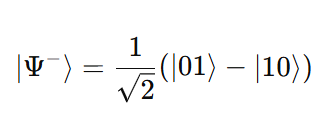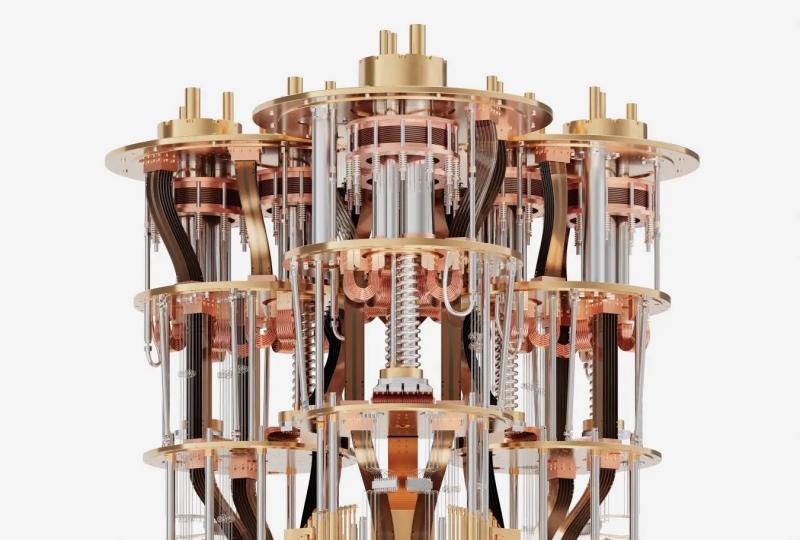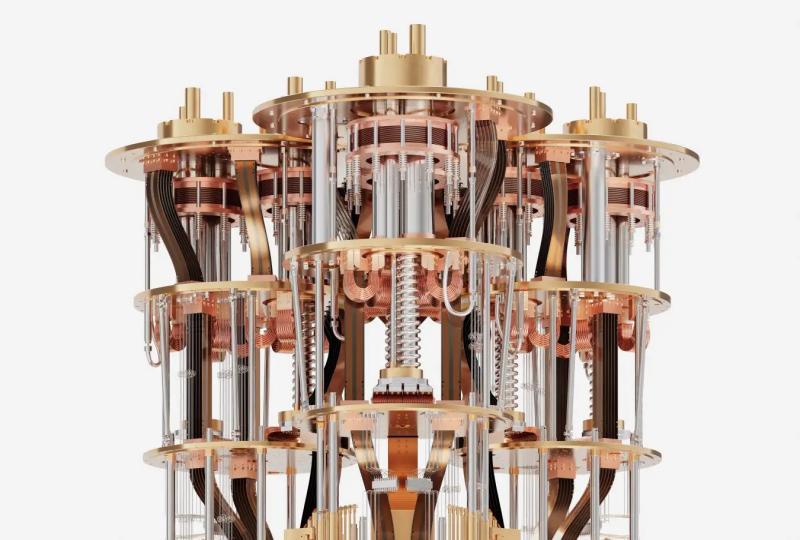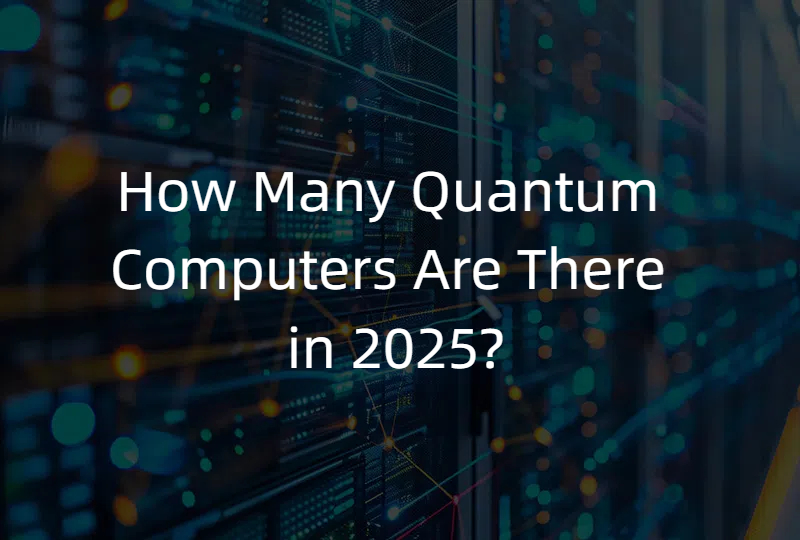What Is Entanglement in Quantum Computing & How It Works
2025.06.16 · Blog entanglement in quantum computing
Quantum entanglement is not just a mind-bending phenomenon—it's the beating heart of quantum computing. By enabling qubits to be deeply connected no matter how far apart, entanglement unlocks computational powers far beyond classical systems. In this guide, we'll explore what entanglement means in quantum computing, why it matters, and how it's used to build the future of computing.
What is Quantum Computing?
Quantum computing is a revolutionary model of computation that leverages the principles of quantum mechanics to process information in fundamentally new ways.
Unlike classical computers that use bits to represent data as 0s or 1s, quantum computers use quantum bits, or qubits, which can exist in multiple states simultaneously. This allows quantum systems to explore vast computational possibilities in parallel.
Quantum computing holds the promise to solve certain problems that are practically impossible for classical supercomputers—such as simulating molecular interactions, optimizing complex systems, and breaking current encryption methods.
The Principles of Quantum Computing
Quantum computing relies on three key principles of quantum mechanics:
1. Superposition: A qubit can be in a state of 0, 1, or both 0 and 1 at the same time. This enables quantum computers to perform multiple calculations simultaneously.
2. Entanglement: When two or more qubits become entangled, the state of one qubit is instantly correlated with the state of another, regardless of the distance between them. This unique linkage enables quantum systems to represent and manipulate complex correlations in data.
3. Quantum Interference: Quantum algorithms leverage interference to amplify correct paths and cancel out incorrect ones, increasing the probability of reaching the right answer.
These principles together form the foundation of quantum algorithms and give quantum computing its extraordinary potential. Among them, entanglement plays a pivotal role, as we will explore in the following sections.
What is Quantum Entanglement?
Quantum entanglement is a fundamental phenomenon in quantum physics where two or more particles become linked in such a way that the state of one particle instantly determines the state of the other, no matter how far apart they are. This mysterious connection puzzled even Einstein, who famously called it “spooky action at a distance.”
If you'd like to dive deeper into the physics behind this concept, check out our comprehensive guide to quantum entanglement.
What is Entanglement in Quantum Computing?
In quantum computing, entanglement refers to a quantum correlation between qubits that allows their states to be interdependent, even when separated by large distances. This is one of the most powerful and unique features that distinguishes quantum computers from classical machines.
Entanglement enables qubits to share information in a way that classical bits cannot, forming the foundation for many quantum algorithms and protocols.
What is an Entangled State in Quantum Computing?
An entangled state in quantum computing is a special type of multi-qubit state in which the individual qubits do not have independent values. Instead, their states are linked: measuring one qubit instantly reveals information about the others.
A classic example is the Bell state:

In this entangled state, if one qubit is measured and found to be 0, the other will also be 0. If one is 1, the other is guaranteed to be 1. This correlation persists no matter how far apart the qubits are.
Such entangled states are crucial building blocks in quantum gates, algorithms, and communication systems.
Role of Entanglement in Quantum Computing
Entanglement plays a central role in enabling quantum computers to perform complex calculations efficiently. Here's how it contributes:
-
Parallelism and Information Sharing: Entanglement allows qubits to represent and process multiple values simultaneously, increasing computational parallelism.
-
Quantum Speedup: Many quantum algorithms (such as Shor's algorithm and Grover's algorithm) rely on entangled states to outperform their classical counterparts.
-
Quantum Error Correction: Entangled qubits are used to detect and correct errors in quantum systems, maintaining coherence over longer periods.
-
Quantum Gate Operations: Multi-qubit quantum gates like the CNOT gate depend on entanglement to manipulate data across qubits.
In essence, without entanglement, a quantum computer would be little more than a probabilistic classical computer. It is entanglement that allows qubits to function together as a system, unlocking the true power of quantum computation.
The Principle of Entanglement in Quantum Computing
Understanding how entanglement works—both physically and mathematically—is key to grasping the power of quantum computation.
Physical Perspective
In physical terms, entanglement arises when two or more qubits interact in such a way that their quantum states become inseparable. This can occur via interactions such as:
-
Coupled spins in superconducting circuits
-
Shared photons in optical systems
-
Coulomb or magnetic interaction between trapped ions
Once entangled, the qubits form a composite system, meaning the overall quantum state can no longer be described by the state of each qubit individually.
Analogy: Think of two coins that are magically linked. Flip one in New York and instantly know the outcome of the other in Tokyo. In classical physics, this is impossible. In quantum physics, it's called entanglement.
Mathematical Representation
Mathematically, entanglement is described using the tensor product of qubit states. For two qubits:

This is a separable (non-entangled) state. But an entangled state—like a Bell state—looks like this:

This state cannot be factored into individual components of Qubit A and Qubit B. The information is embedded in the relationship between the qubits, not in the qubits themselves.
This non-separability is what enables entangled qubits to process and encode information collectively, a property essential for quantum algorithms, teleportation, and error correction.
Why Entanglement Matters in Quantum Computing
The principle of entanglement allows quantum computers to:
-
Encode complex data structures in fewer physical qubits
-
Build quantum gates that act across multiple qubits at once
-
Achieve exponential speed-ups in solving certain problems
Entanglement is not just a byproduct of quantum mechanics—it's a carefully controlled computational resource that quantum computers harness for real-world advantage.
Practical Applications of Entanglement in Quantum Computing
Here are the most significant real-world applications of entanglement in quantum computing:
#1 Quantum Teleportation
Quantum teleportation uses entanglement to transmit the state of a qubit from one location to another without physically moving the qubit itself. It relies on a pair of entangled qubits shared between two parties. By performing a specific joint measurement on the sender's side and communicating classical bits, the receiver can reconstruct the original quantum state.
This technique is crucial for:
-
Quantum communication networks
-
Distributed quantum computing
-
Long-distance quantum state transfer
#2 Superdense Coding
Superdense coding is the inverse of quantum teleportation. It uses one entangled pair to transmit two classical bits of information by manipulating only one qubit. This effectively doubles the communication capacity of quantum channels.
It is a foundational technique in:
-
Quantum communication systems
-
Future quantum internet architectures
-
Data compression using entanglement
#3 Quantum Error Correction
Quantum systems are fragile and prone to decoherence. Classical error correction doesn't work for qubits, but quantum error correction codes use entanglement to detect and correct errors without directly measuring the quantum information.
Famous error-correcting codes like the Shor Code and Surface Code depend on entangled qubits to:
-
Detect bit-flip and phase-flip errors
-
Preserve quantum information across noisy channels
-
Enable fault-tolerant quantum computing
#4 Quantum Gates (e.g. CNOT)
Entanglement is essential for building multi-qubit quantum gates, which are the building blocks of all quantum circuits. For instance, the Controlled-NOT (CNOT) gate can entangle two qubits:
-gate.png)
These entangling gates allow qubits to interact and perform complex operations that are impossible in classical computing. Without entanglement, quantum gates would be limited to isolated qubit operations, drastically reducing computing power.
#5 Quantum Algorithms (e.g. Grover, Shor)
Many groundbreaking quantum algorithms rely on entanglement to outperform classical counterparts:
-
Shor's algorithm: Uses entanglement in the quantum Fourier transform step to factor large numbers exponentially faster than classical algorithms.
-
Grover's algorithm: Employs superposition and entanglement to search unsorted databases in √N time, offering quadratic speed-up.
Entanglement enables these algorithms to manipulate complex probability distributions and correlations that classical bits cannot represent.
#6 Quantum Cryptography
Quantum key distribution (QKD) schemes like Ekert's protocol (E91) utilize entangled photon pairs to generate encryption keys securely. If an eavesdropper tries to intercept the entangled particles, the entanglement breaks, and the intrusion is instantly detected.
Entanglement-based cryptography ensures:
-
Secure communication even over untrusted channels
-
Detection of any third-party interference
-
Protection against quantum hacking threats
Barriers to Using Entanglement in Practical Quantum Computing
Practical use of entanglement in quantum computing faces both technical limitations and fundamental physical constraints. Overcoming these barriers is one of the biggest challenges in building large-scale quantum systems.
#1 Decoherence and Environmental Noise
Entangled states are extremely sensitive to their environment. Even slight interference—thermal fluctuations, electromagnetic noise, or vibrations—can destroy the fragile quantum correlations between qubits. This process, called decoherence, causes the entangled system to collapse into a classical mixed state.
-
The more qubits are entangled, the faster decoherence tends to occur.
-
Maintaining entanglement requires isolation from noise sources and ultra-stable hardware (like dilution refrigerators in superconducting qubit systems).
#2 High-Fidelity Gate Operations
To generate and manipulate entanglement, we rely on quantum gates (e.g., Hadamard, CNOT). But current quantum hardware suffers from gate infidelity—errors caused by imperfections in timing, calibration, and physical coupling.
-
Two-qubit entangling gates (like CNOT) are particularly error-prone.
-
Accumulated gate errors can corrupt entangled states, limiting circuit depth and reliability.
This poses major limitations for running large-scale algorithms like Shor's or Grover's, which rely heavily on entanglement.
#3 Scalability of Entangled Systems
As the number of qubits increases, so does the complexity of managing entangled systems. Entanglement must be orchestrated across many qubits simultaneously to achieve quantum advantage, but:
-
Controlling many-body entanglement with precision is exponentially difficult.
-
Cross-talk between qubits, synchronization issues, and connectivity constraints make it hard to scale reliably.
Without scalable entanglement management, quantum computers cannot reach fault-tolerant levels.
#4 Error Correction Overhead
Quantum error correction (QEC) heavily relies on entangling multiple physical qubits to form one logical qubit. But ironically, the process of QEC requires even more entanglement, making it both a solution and a source of complexity.
-
QEC codes like the surface code may need thousands of physical qubits per logical qubit.
-
The engineering cost of generating and sustaining such massive entanglement is currently a major bottleneck.
#5 Limited Understanding of Many-Body Entanglement
While entanglement between 2 or 3 qubits is well understood and controllable, many-body entanglement (involving 10+ qubits) enters a regime that challenges even theoretical physics.
-
Characterizing large entangled states is exponentially hard.
-
Verifying entanglement at scale without destroying it is still an open research question.
Featured Content






